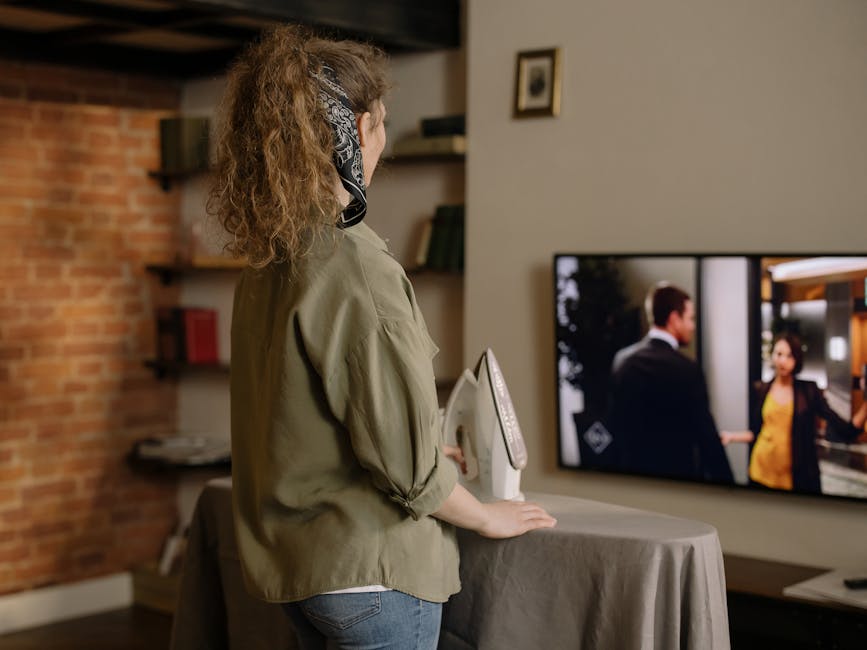Small TVs are making a big comeback. They’re perfect for kitchens, bedrooms, offices, or even RVs, offering entertainment without dominating the space. But with so many options available, choosing the right one can feel overwhelming. This article explores the top features every small TV should have in 2024, guiding you toward the perfect compact viewing experience. From resolution and smart capabilities to connectivity and audio quality, we’ll cover 20 key recommendations to help you make an informed decision. Whether you’re a casual viewer or a dedicated binge-watcher, finding a small TV that meets your needs is easier than you think. Let’s dive in and discover the essential features that will transform your small screen entertainment.

Essential Display Features for Small TVs
Resolution and Panel Technology
Even on a smaller screen, resolution matters. Look for at least 1080p (Full HD) for crisp, clear images. 4K resolution is becoming increasingly common in smaller sizes and offers exceptional detail, especially beneficial for gaming or watching nature documentaries. Consider the panel technology too. LED TVs are standard, offering good color and contrast. OLED panels provide superior black levels and vibrant colors, but they typically come at a higher price point.
HDR (High Dynamic Range) support enhances the contrast and color range, making images more realistic and lifelike. Look for HDR10, Dolby Vision, or HLG formats for the best experience. Consider the viewing angles, particularly if the TV will be placed in a location where it might be viewed from the side. IPS panels generally offer wider viewing angles than VA panels.
Refresh rate is another crucial factor, particularly for gamers. A higher refresh rate, such as 60Hz or 120Hz, results in smoother motion, reducing blur during fast-paced scenes. While not as critical for casual viewing, it’s a valuable feature for action movies and sports.
Screen Size and Aspect Ratio
Small TVs typically range from 24 to 43 inches. Choose a size that fits comfortably in your space without feeling cramped. Measure the available area and consider the viewing distance. A larger screen might be tempting, but it can be overwhelming in a small room.
The standard aspect ratio for most TVs is 16:9, which is ideal for widescreen content. Some smaller TVs might have a 4:3 aspect ratio, which is suitable for older content but may result in black bars on the sides when watching modern movies or shows.
Consider the TV’s bezel size. Thinner bezels create a more immersive viewing experience and make the screen appear larger than it is. A sleek, minimalist design with thin bezels can also enhance the overall aesthetics of the room.
Smart Features and Connectivity
Operating System and App Support
A smart TV platform provides access to streaming services, apps, and online content. Popular operating systems include Roku TV, Amazon Fire TV, Google TV, and webOS. Choose a platform that offers a wide selection of apps and a user-friendly interface. Ensure the platform supports your preferred streaming services like Netflix, Hulu, and Disney+.
Voice control is a convenient feature that allows you to search for content, control playback, and adjust settings using voice commands. Many smart TVs have built-in voice assistants like Alexa or Google Assistant. This hands-free control can simplify navigation and enhance the user experience.
Consider the processing power of the smart TV. A powerful processor ensures smooth performance and quick loading times for apps and streaming content. A sluggish interface can be frustrating, so opt for a TV with a responsive and efficient processor.
Ports and Wireless Connectivity
Check the available ports on the back of the TV. HDMI ports are essential for connecting external devices like gaming consoles, Blu-ray players, and soundbars. Multiple HDMI ports are beneficial if you plan to connect multiple devices simultaneously.
USB ports allow you to connect external storage devices like flash drives or hard drives to play media files directly on the TV. An Ethernet port provides a wired network connection, which can be more stable than Wi-Fi, especially for streaming high-bandwidth content.
Built-in Wi-Fi and Bluetooth are essential for wireless connectivity. Dual-band Wi-Fi offers better performance and stability than single-band Wi-Fi. Bluetooth allows you to connect wireless headphones, keyboards, and other peripherals.
Audio Quality and Other Considerations
Sound Output and Enhancement Technologies
While small TVs often have limited speaker size, look for models with decent audio quality. Features like Dolby Atmos or DTS:X can enhance the soundstage and create a more immersive audio experience.
Consider connecting a soundbar or external speakers to improve the audio quality. Check if the TV supports audio output options like optical audio or HDMI ARC for easy connection to external audio devices.
Some small TVs have built-in subwoofers for enhanced bass response. This can add depth and richness to the audio, making movies and music more enjoyable.
Design, Mounting Options, and Remote Control
The TV’s design should complement your room’s aesthetics. Look for a sleek and modern design with thin bezels. Consider the stand design and ensure it’s stable and doesn’t take up too much space.
Check the VESA mounting compatibility if you plan to wall-mount the TV. Ensure the TV is compatible with your chosen wall mount bracket.
The remote control should be user-friendly and intuitive. Look for a remote with dedicated buttons for popular streaming services and voice control functionality.
Conclusion
Choosing the right small TV involves careful consideration of various features. From display quality and smart capabilities to connectivity and audio performance, each aspect plays a crucial role in the overall viewing experience. By prioritizing these 20 key recommendations, you can find the perfect small TV that fits your needs and budget, transforming any small space into an entertainment hub.

Leave a Reply